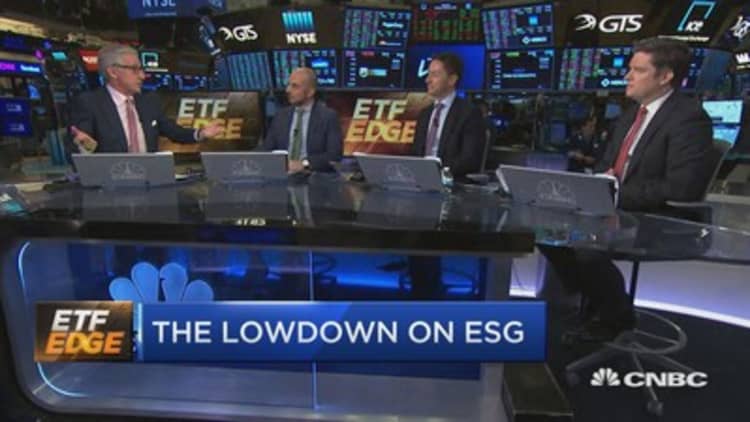Investors looking to impact society in a positive way, and hopefully turn a profit in the process, shoveled money into so-called sustainable funds in record amounts last year.
Mutual funds and exchange-traded funds with a focus on sustainability raked in $20.6 billion of total new assets in 2019, according to Morningstar.
Last year's net money flows into these funds, also known as impact or ESG funds, were almost four times as much as the $5.5 billion in 2018, which was the previous high bar.
"It really blew past that record," said Jon Hale, the head of sustainability research at Morningstar. "This was quite a big surge."
The managers who oversee sustainable funds typically invest based on certain environmental, social or governance factors, or a combination of the three. That could include avoiding energy companies focused on fossil fuels, investing in firms with diverse workforces and selecting ones whose boards have the expertise to help navigate climate risk.
"I think there are big things happening in the world and economy today that align with this level of interest," Hale said. "Climate change, for example, is a big issue that's of increasing concern for more and more people."
Around 85% of investors are interested in sustainable investing, up from 71% in 2015, according to a Morgan Stanley survey. Young people tend to be most intrigued — 95% of millennials polled in the survey expressed interest.
Asset managers have created new impact funds to capitalize on demand. There are roughly 300 mutual funds and exchange-traded funds with an ESG focus, much more than there were even three years ago, Hale said.

Investment managers have also debuted cheaper ESG funds to satisfy investor desire for lower costs. In 2013, the least expensive impact funds charged investors roughly 0.50% annually on their assets, Hale said. The cheapest funds today cost around 0.10% — an 80% reduction and much more competitive with non-ESG funds on the market.
Many impact funds have also been available for at least three years, which is a key hurdle for financial advisors looking to recommend such investments to clients.
Despite a record year, money in ESG funds still pales in comparison to the broader fund market. Sustainable mutual and exchange-traded funds held $137.3 billion in total assets at the end of 2019 — or less than 1% of the $20.7 trillion held in the universe of mutual and exchange-traded funds in the U.S., according to Morningstar.
"There's a lot of room to grow yet," he said. "We're still in early days in terms of translating interest to actual investments."


